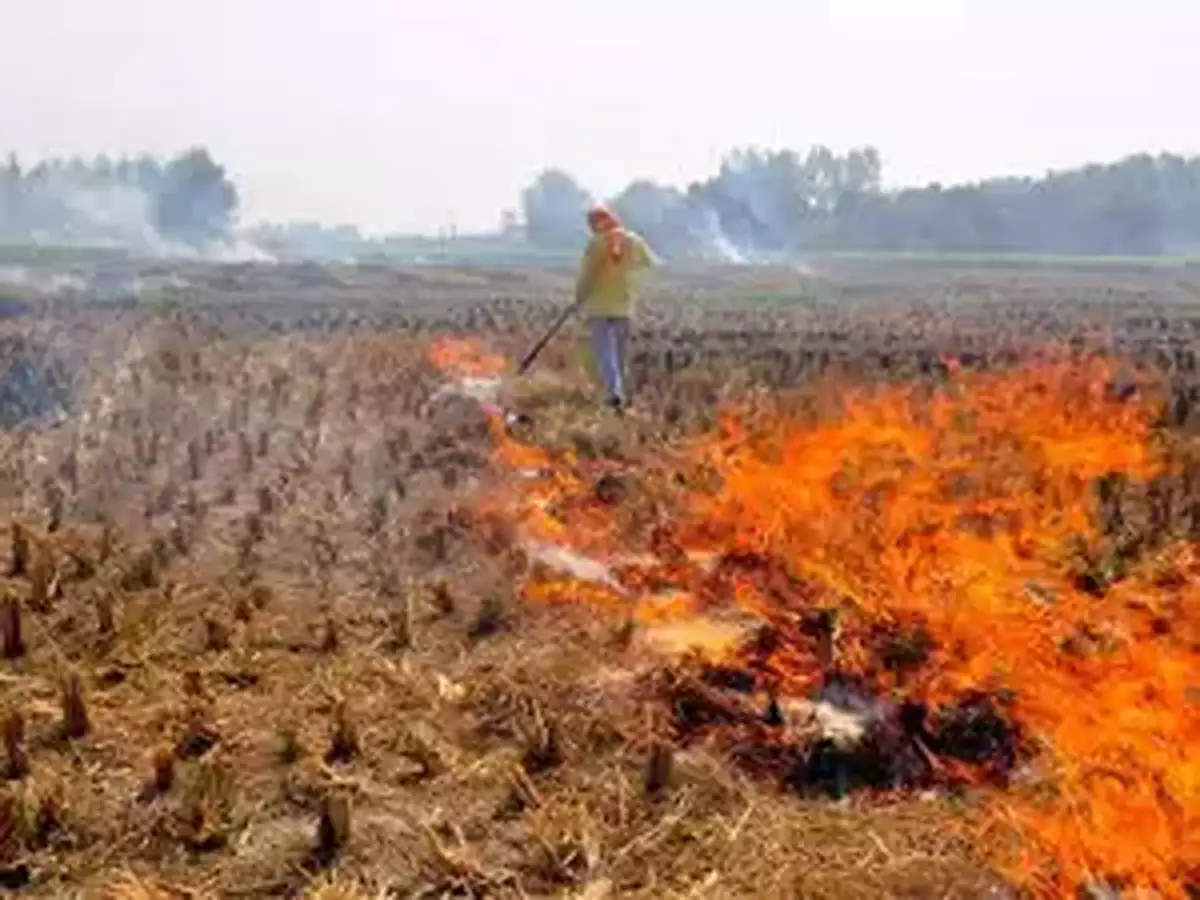NEW DELHI: The farmers in Punjab and Haryana have begun harvesting paddy, and it has started haunting residents of the national capital. Last year in the Diwali season, when paddy was harvested, the pollution level in the national capital reached higher than 500 AQI, which is categorised as “severe”.
Again, this year, cases of stubble burning are being reported from Punjab and Haryana. According to the Punjab Pollution Control Board on 5 October, more than 540 cases of stubble burning were reported and districts like Amritsar and Tarn Taran are at the top with 70 and 26 cases respectively. Both state governments are working to stop this practice. Punjab and Haryana governments have launched massive awareness drives. Agriculture departments in both states are encouraging farmers to use happy seeders and other machines for stubble management, but farmers are still using the traditional method of burning stubble to get rid of paddy straw.
The Sunday Guardian talked to various experts and environmentalists to know how this problem could be solved. Davinder Sharma, an agriculture and food specialist, highlighted that stubble burning is not the only problem of Punjab, “this is the problem of the whole society”.
“Both state government and central government should corporate with each other to solve this grave problem,” said Sharma. Around 200 lakh tonne stubble is produced every year. Both government and private sectors are not able to manage, and farmers are asking for incentives to manage stubble burning, “in this case incentives should be provided to farmers”, Davinder Sharma said.
Stubble is the source of gaseous pollutants such as carbon dioxide (CO2), carbon monoxide (CO), nitrogen oxides (NOx), sulfur oxides (SOx), and methane (CH4) as well as particulate matter (PM10 and PM2.5) causing serious damage to human health and the environment. “Stubble is damaging our environment and agriculture. The government is spending money on machines, which is not successful for small farmers. Why is the government not incentivising farmers?” Sharma asked. “Why is the Centre not providing Rs 2,000 crore to states for stubble management,” Sharma asked.
On 6 October, Punjab CM Bhagwant Mann met representatives from farm unions to discuss the stubble-burning issue. CM Mann appealed to farmers to support the government in the fight against stubble fire. Mann said that the state government is making available 1.22 lakh stubble management machines and an app has been developed by the Punjab Agricultural University (PAU) to facilitate the use of these machines.
The ground situation is different; The Sunday Guardian talked to Parvinder Singh, a farmer from District Fatehgarh Sahib, who said: “The majority of farmers in Punjab are small farmers with less than 5-acre land, they use small tractors which are not capable of handling stubble management machines. In this case, only big farmers get the benefit and we are only left with the option to burn the stubble.” After the meeting, farmer union leaders said they have asked the CM not to take strict action against farmers and they have also asked the government to pay Rs 6,000 per acre for stubble management. Sunil Dahiya, an analyst at the Centre for Research on Energy and Clean Air explained one of the root causes behind stubble burning. “After harvesting, paddy farmers in Punjab and Haryana have only two weeks to sow other crops and labour cost is also not viable for farmers to manage paddy straw, in this situation, they go for stubble burning,” Dahiya said.
Stubble burning not only impacts the national capital, but effects are also seen in places where paddy straw is burned. According to research by Har Amrit Singh Sandhu, Department of Civil Engineering, PEC Chandigarh, “Burning of stubble produces a vast cloud of smoke consisting of pollutants like RSPM, NOx, and SO2, which are entrapped in the troposphere engulfing the whole region during October and November months every year. The level of these pollutants crosses the permissible limit as stated by the National Ambient Air Quality Standard,” reads the paper.
“People are more concerned about Delhi, but no one talks about farmers, who are also victims of smoke,” Dahiya said. Dahiya also pointed out that governments are seen as active only in the season of Kharif harvesting. “The government should work for the whole year and focus on diversification should be laid,” Sunil Dahiya said. But one big problem in diversification is that farmers are not getting assured prices. Punjab CM Mann asked the Centre to provide an assured mechanism to give remunerative prices for diversified crops.
‘Incentives, diversification only solution to tackle stubble burning’
- Advertisement -

